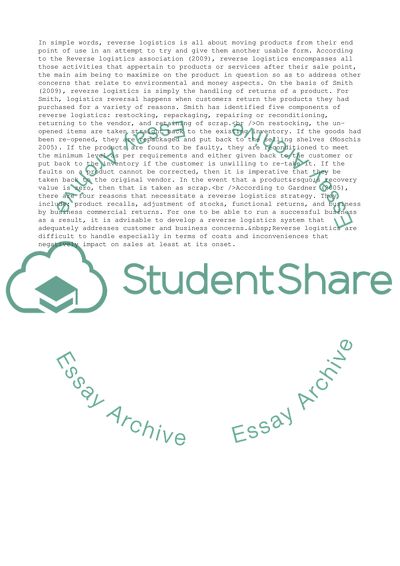Cite this document
(Reverse Logistics Principles Assignment Example | Topics and Well Written Essays - 1500 words - 6, n.d.)
Reverse Logistics Principles Assignment Example | Topics and Well Written Essays - 1500 words - 6. https://studentshare.org/management/1730228-supply-chain-management
Reverse Logistics Principles Assignment Example | Topics and Well Written Essays - 1500 words - 6. https://studentshare.org/management/1730228-supply-chain-management
(Reverse Logistics Principles Assignment Example | Topics and Well Written Essays - 1500 Words - 6)
Reverse Logistics Principles Assignment Example | Topics and Well Written Essays - 1500 Words - 6. https://studentshare.org/management/1730228-supply-chain-management.
Reverse Logistics Principles Assignment Example | Topics and Well Written Essays - 1500 Words - 6. https://studentshare.org/management/1730228-supply-chain-management.
“Reverse Logistics Principles Assignment Example | Topics and Well Written Essays - 1500 Words - 6”. https://studentshare.org/management/1730228-supply-chain-management.


